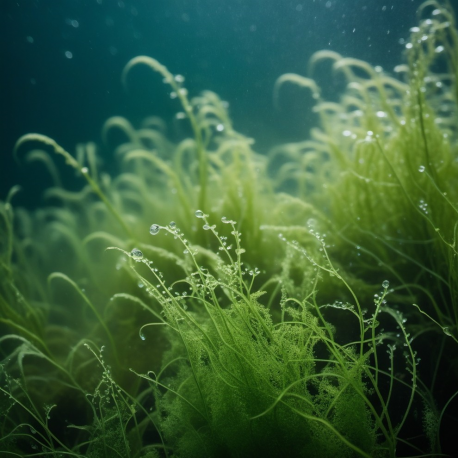More info
Table of Contents
Introduction
Algae growth is an inevitable aspect of maintaining a freshwater aquarium. While some algae presence signifies a healthy ecosystem, excessive algae can be unsightly and harmful to fish and plants. Understanding the causes, prevention methods, types of algae, and general maintenance tips can help keep algae under control and promote a vibrant aquatic environment.
Algae Causes
Suboptimal Flow
Inadequate water circulation is a primary cause of algae growth. Small hang-on-back (HOB) filters often fail to provide sufficient circulation, affecting oxygenation and nutrient distribution. This poor circulation can hinder plant growth, allowing algae to thrive. Moreover, HOB filters generate unstable flow patterns due to water level variations from evaporation, further contributing to algae proliferation.
Biofiltration Capacity
Higher livestock density in small tanks combined with insufficient filtration systems can lead to organic waste accumulation. This buildup of waste provides nutrients for algae, leading to persistent algae issues.
Nutritional Flux
The type of substrate used can influence nutrient availability and stability in the aquarium. Aquasoil, an organic soil compressed into granules, acts as a natural nutrient buffer, reducing fluctuations. In contrast, inert substrates like sand or synthetic soils do not provide the same stability, contributing to plant stress and subsequent algae growth.
Algae Prevention
Proper Filtration and Circulation
Investing in a properly-sized external filter and ensuring adequate water flow are crucial steps in preventing algae. Consistent water movement helps distribute nutrients evenly and supports plant growth, competing with algae for resources.
Balanced Nutrient Management
Using substrates like Aquasoil and maintaining a consistent fertilization schedule can create a stable environment. Avoid overfeeding and manage organic waste to prevent nutrient spikes that favor algae growth.
Appropriate Tank Setup
Choosing fast-growing plants and ensuring the tank is adequately cycled before adding fish can help stabilize the environment. Avoiding premature planting and introducing fish gradually can reduce stress on the tank and minimize algae outbreaks.
Algae Types
Brown Algae
Common in new aquariums, brown algae, also known as gravel or silica algae, coats surfaces in sheets. It is usually harmless and will diminish as the tank matures. Cleaning involves wiping it off and using a gravel vacuum during water changes.
Blue-Green Algae
Also called slime or smear algae, blue-green algae are often caused by excess nitrate and phosphate. It's usually cyanobacteria rather than true algae. Effective control may require special treatments to remove excess nutrients.
Red or Beard Algae
This tough algae often appears on plants and can be removed by dipping affected plants in a weak bleach solution.
Green Algae
Also known as hair, thread, or spot algae, green algae are common in well-maintained tanks. Algae-eating fish can help keep it in check.
Green Water
Caused by microscopic algae suspended in the water, green water or algae bloom is difficult to remove with traditional methods. A diatomic filter or blocking light for several days can help, as can using ultraviolet light in the filtration system.
Tips
Regular Water Changes
Performing regular water changes (10-15% weekly) helps reduce nutrient levels in the water, preventing algae overgrowth.
Adjusting Lighting
Avoid placing the tank in direct sunlight and limit artificial lighting to 8-10 hours per day using a timer.
Controlling Feeding
Feed fish small portions and remove uneaten food promptly to prevent nutrient buildup.
Maintenance
-
Scrape Algae: Regularly scrape algae from glass and clean rocks and decorations.
-
Use Live Plants: Incorporate live plants to absorb nutrients and outcompete algae.
-
Add Algae-Eating Species: Introduce algae-eating fish like otocinclus and shrimp to help control algae.
Testing
Regularly test your aquarium water for phosphate and nitrate levels. High levels of these nutrients can promote algae growth. Using phosphate removers or filtered water can help maintain balanced nutrient levels.
Fertilizing
Follow a consistent fertilization routine tailored to your tank's needs. Avoid over-fertilizing, which can lead to nutrient imbalances and promote algae growth.
Equipment
Lighting
Use appropriate lighting levels and durations to prevent excessive algae growth. Consider adjustable LED lights to control intensity.
Filtration
Opt for a canister filter or appropriately-sized external filter to ensure adequate biofiltration and water circulation.
CO2 System
For planted tanks, a CO2 injection system can boost plant growth, helping to outcompete algae.

